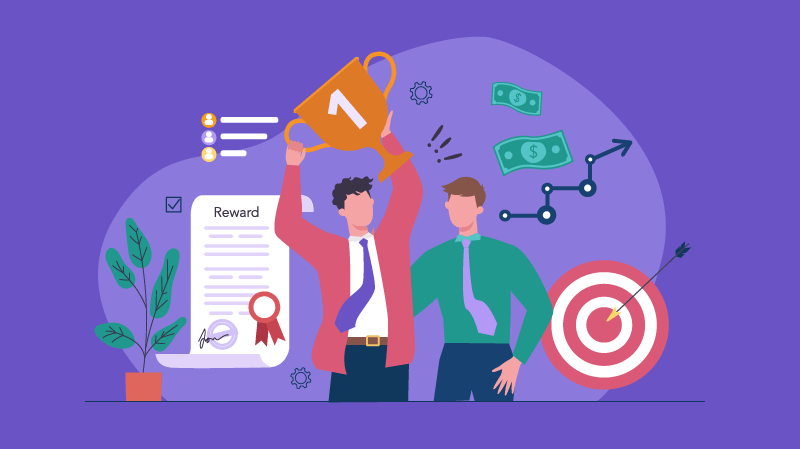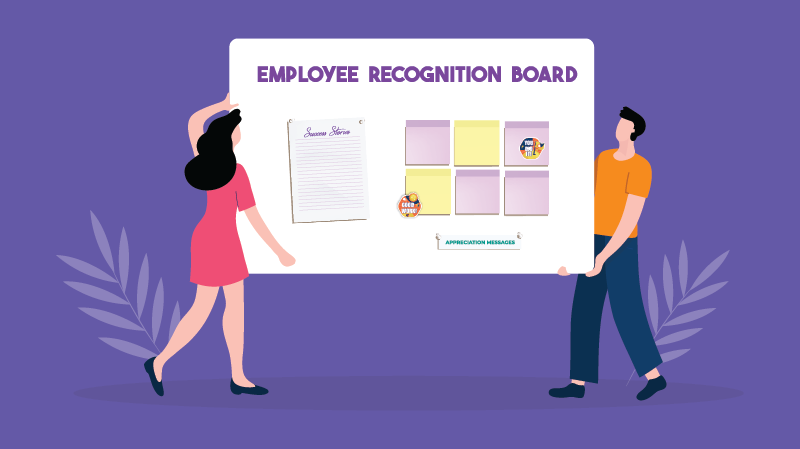Agile Rewards and Recognition: Tips for HR
Agile rewards and recognition are the ultimate change-makers in workplace incentives—they are dynamic influencers of acknowledgment. Unlike the outdated routine rewards, agile recognition instantly lets managers celebrate small wins.
Did You Know? Over 91% of HR professionals believe that recognition and reward make employees more likely to stay.
Imagine your team has just gotten a "Great Job done" from the biggest retainer client for a critical campaign but now has to wait for six months for the annual review to be rewarded for this achievement. In today's fast-track work scenario, pushing employee recognition for later can dent the morale. Celebrating wins only during formal evaluations risks missing the link between effort and results.
Recognition is the greatest motivator.
– Bob Nelson
It's time to ditch the old-fashioned year-end reviews. Empower managers to recognize and reward hard work in real-time, boosting team spirits with lively shout-outs, playful badges, and e-gift cards as they achieve their goals.
Understanding Agile Rewards and Recognition
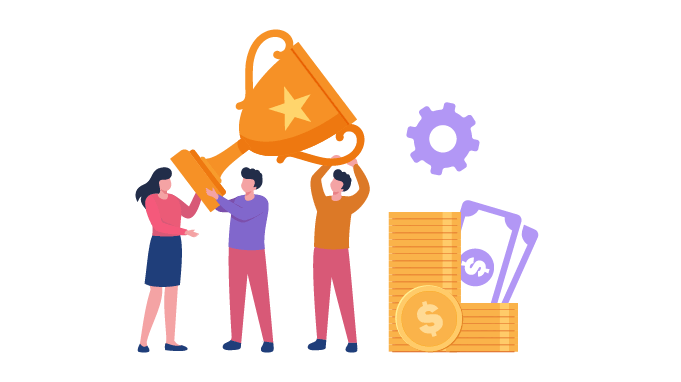
Understanding Agile Rewards and Recognition is about embracing a flexible and immediate approach to acknowledging and appreciating achievements in the ever-changing workplace.
Unlike traditional, static reward systems, Agile methodologies focus on real-time feedback, adapting to individual and team needs, and encouraging a culture of continuous improvement and collaboration.
Agile methods bring spontaneity and personalization. It's the recognition game for the new generation, which enables quick adjustments to keep up with the ever-evolving motivations of the modern workforce.
The agile methodology is based on 12 principles:
- Satisfy the customer through early and continuous delivery.
- Welcome changing requirements, even late in development.
- Deliver working software frequently.
- Business people and developers work together daily.
- Build projects around motivated individuals.
- Convey information via face-to-face conversation.
- Working software is the primary measure of progress.
- Maintain a constant pace indefinitely.
- Give continuous attention to technical excellence.
- Simplify: maximizing the amount of work not done.
- Teams self-organize.
- Teams retrospect and tune behavior.
Key Takeaways
Key Takeaways
- Understanding Agile Rewards and Recognition
- Key Principles of Agile Rewards and Recognition
- Implementing Agile Rewards and Recognition in HR
- Challenges and Solutions
- Best Practices and Tips
Key Principles of Agile Rewards and Recognition
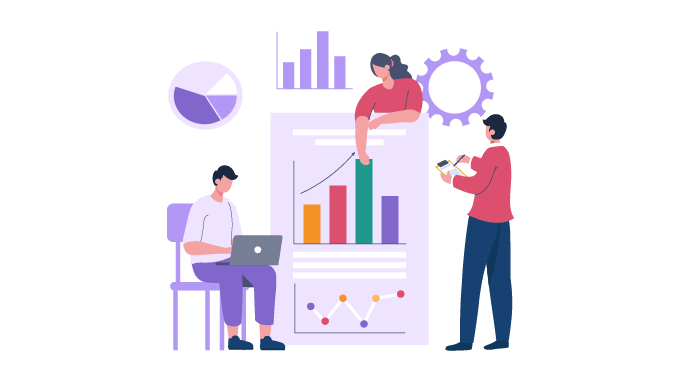
It's evident that merely meeting the basic requirements won't suffice in the new-age workplace. Integrating a recognition strategy into everyday operations is imperative for businesses truly committed to retaining talent and enhancing engagement.
In day-to-day operations, an agile rewards strategy proves essential, ensuring that acknowledgment is not just a routine but dynamic and responsive. This strategy aligns with the fast-paced nature of the modern workplace, contributing to a culture where employees feel consistently valued and motivated.
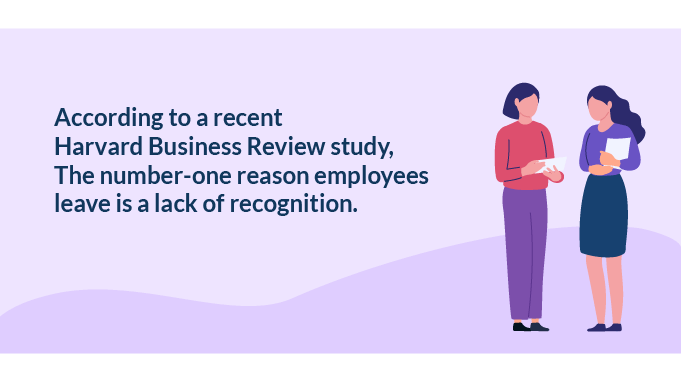
The top features of Agile Rewards that make them ever important for all organizations include:
Flexibility and Adaptability
Agile rewards possess a unique characteristic that enables prompt adjustments to match the evolving business needs and individual employee achievements. This adaptability ensures that recognitionremains closely tied to current objectives and employee successes, fostering a responsive and motivating work environment.
Continuous Feedback and Iteration
Regular check-ins through surveys and performance data are an important prerequisite for optimizing rewards. Continuous feedback helps managers understand employee motivations in real time and iterate incentives accordingly. Employee needs and expectations change, and ongoing feedback acts as a valuable compass, guiding organizations to adjust their reward strategies promptly. This iterative process ensures that rewards align with current objectives and enables organizations to address any emerging challenges promptly. Soliciting regular employee feedback provides critical insights to continually realign rewards to what motivates teams. Thus, staying connected to employee perspectives through feedback loops keeps reward systems focused on performance today and readiness for tomorrow.
Employee Engagement and Motivation
Agile rewards are like fuel for employee motivation and employee engagement. Employees feel valued and motivated by aligning rewards with short-term goals and promptly recognizing individual and team contributions. Instant gratification not only boosts morale but also enhances job satisfaction. Moreover, Agile rewards contribute significantly to employee retention by creating an environment where talent is acknowledged, and efforts are celebrated promptly. This approach reflects a deeper understanding of the modern workforce's needs, ultimately creating a positive and engaging workplace that attracts and retains top talent.
Companies that prioritize employee recognition have workers who are 56% less likely to be looking for a new job, according to a new Gallup/Workhuman survey.
According to performance management statistics published by Gartner, an effective employee recognition program can help drive an 11.1% increase in average employee performance.
60% of top-performing organizations report that their employees perform much higher when a company offers various forms of employee recognition.
Data-Driven Decision Making
By utilizing real-time data and analytics, organizations can precisely tailor rewards to motivate top talent. Machine learning models help pinpoint whether public or private recognition, choice assignments, flexibility options, or other perks boost any single worker's performance now. Managers then gain agency to personalize timely reinforcements fittingly. Continually monitoring results allows refinement for optimum returns. With adaptable, targeted recognition, companies incentivize their highest strategic priorities.
Implementing Agile Rewards and Recognition in HR
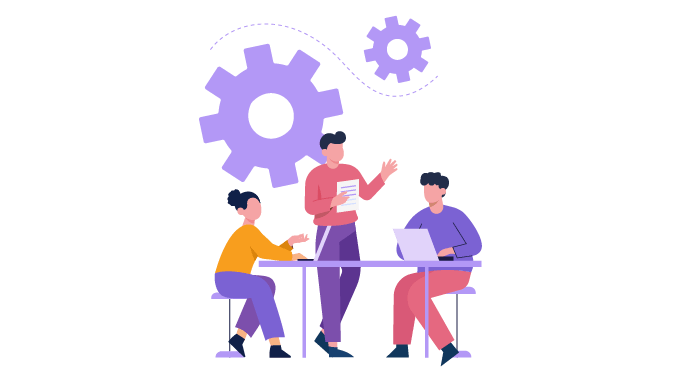
Did you Know
According to Gartner, in organizations where performance management utility is high vs those where it is low:
- Employee engagement 14% higher
- Workforce performance 24% higher
- The proportion of employees reporting that performance management is fair and accurate is 50% higher
- The proportion of high performers in the workforce is 7% higher
- The businesses that were dedicated to continuous recognition programs retained their staff, and it is clear why: over 91% of HR professionals believe that recognition makes employees more likely to stay at their current jobs.
Bringing Agile Rewards and Recognition to HR changes how employees feel at work. Giving instant recognition and being flexible make the workplace better. Agile Rewards and Recognition transform how organizations inspire their teams, building a culture of success and shared accomplishments.
Setting Clear Objectives and Metrics
Agile rewards work best when clear targets are connected to business goals like improving quality, increasing sales, or boosting customer satisfaction scores. Setting measurable goals and performance indicators for Agile rewards involves:
- Clearly defining objectives such as increasing productivity or fostering teamwork
- Identifying key performance indicators (KPIs) aligned with these objectives
- Quantifying success criteria
- Implementing a system for regular assessment and adjustment
- Break major goals down into smaller milestones over a few months. Use data and feedback to tailor rewards to what motivates teams. Get input from employees on designing incentives they want.
By setting clear, measurable aims together and continually refining approaches, companies benefit from happier, more productive teams thanks to focused rewards that work. This collaborative approach ensures that the rewards system is aligned with organizational goals and effectively resonates with and motivates the workforce.
Technology Utilization
There are more options than ever when picking tools for an agile and adaptive rewards system.
Culture Amp provides robust employee survey capabilities to understand evolving workforce sentiment and preferences so you can respond accordingly.
HI5 specializes in peer recognition programs while offering strong analytics on what drives engagement best for optimal returns.
Vantage Pulse is a powerful employee pulse survey tool that collects, measures and acts on real-time employee feedback.
Achievers and WorkTango enable the creation of targeted campaigns connected directly to company or employee OKRs so recognition has a visible business impact.
Qualtrics offers advanced functionality like machine learning to help predict the incentives with the highest motivation potential across segments.
Cultural Alignment
HR needs to devise a program of Agile rewards that aligns seamlessly with the organization's culture and values. Agile rewards are not just about acknowledging achievements; they reflect an organization's identity and principles. When rewards resonate with the established culture, they promote desired behaviors and contribute to a positive work environment.
Challenges and Solutions
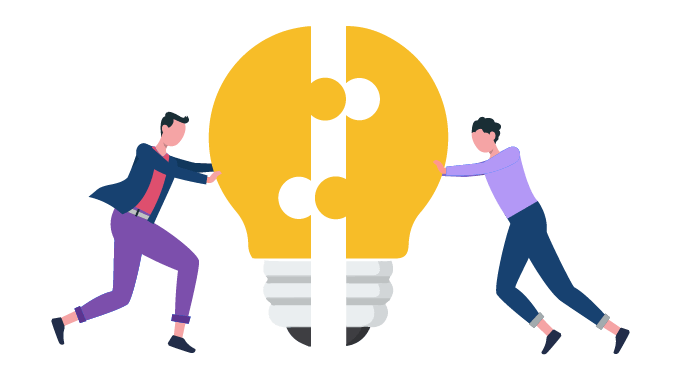
While the benefits of embracing agility are undeniable, many organizations face significant challenges when implementing agile methodologies. So, it is crucial to identify and address them proactively.
-
One common obstacle is resistance to change. People naturally resist change, especially when it disrupts established routines and working methods. It is important to communicate the benefits of agility clearly and involve team members in the decision-making process. Addressing concerns and providing support and training can minimize resistance and foster a sense of ownership and buy-in.
-
Another obstacle is a lack of alignment between different teams or departments. Agile methodologies thrive on collaboration and cross-functional teams. However, when teams operate in silos or have conflicting priorities, it can hinder agility. Organizations need to break down barriers, foster open communication, and create a shared vision and goals to address this. Promoting a culture of collaboration and inclusiveness ensures that everyone is working towards the same goal.
-
Furthermore, inadequate training and education can also pose a challenge. Agile methodologies require a different set of skills and mindsets than traditional working methods. Providing comprehensive training and education is important to equip team members with the necessary tools and knowledge. By investing in training, you can build a team that is confident and capable of embracing agility.
Examples of agile rewards and recognition
Zappos employees are called 'Zapponians,' and some of its unique peer-to-peer recognition programs include
Zollar Program: Zollars (or Zappos Dollars) offered as play money that employees can share.
Coworker Bonus Program: Employees can reward one another with a $50 coworker bonus. They can give each other a maximum of one bonus per month, but they can receive more than one as long as different people give them.
Facebook has a recognition program called "Facebook Applause." Employees can give "Applause" to their colleagues for going "above and beyond" in their roles, and the recognized employee receives a notification and appreciation message.
Employee Engagement company Vantage Circle offers peer-to-peer recognition as one of its unique functionalities to its users. Employees can acknowledge their peers with the help of different badges on the platform and spot award team members with just a click.
Best Practices and Tips

The concept of agility sounds promising, but how can HR organizations and other leaders effectively implement these principles within their teams and companies?
The Agile method is built on four fundamental values, each serving as the cornerstone for every element. These values are articulated to underscore the transition from prioritizing practices and processes to a greater emphasis on people and collaboration.
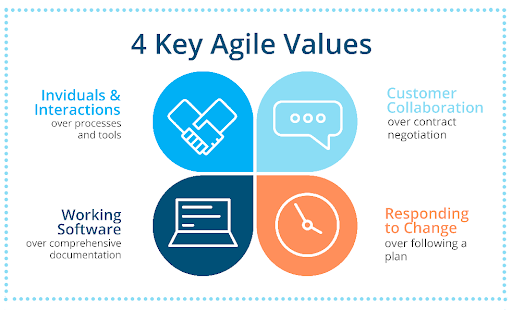
SOURCE:Geneca
Conventional HR practices center around sticking to rules within a rigid hierarchical structure. Agile HR, on the other hand, revolutionizes this approach by embracing a more streamlined and quick method that emphasizes collaboration, feedback, and innovation.
Agile empowers organizations and their leaders to create programs and initiatives aiding employee empowerment and engagement, facilitating a more dynamic and responsive workplace culture.
Here are some actionable tips and best practices for HR professionals looking to implement effective Agile rewards systems:
-
Embrace Flexibility and design a reward system that can adapt to evolving goals and priorities.
-
Real-time Recognition is important. Implement a system for immediate acknowledgment of achievements. It promotes a culture of continuous improvement and keeps employees motivated.
-
Align with Short-term Goals. Connect rewards to short-term objectives to maintain relevance. It ensures that employees see a direct correlation between their efforts and the incentives they receive.
-
Ongoing feedback is crucial. It's vital to gather feedback not just from employees but also from peers, supervisors, and customers. The feedback should be actionable, serving as a basis for making meaningful changes and improvements in the workplace.
-
In Agile HR, it's about helping and involving everyone. Let your team decide things, take charge of their work, and learn from mistakes.
-
Encourage Peer Recognition. Foster a culture where employees can recognize each other's contributions. Peer recognition adds a social element to the reward system and reinforces a collaborative environment.
-
Stay informed and keep abreast of industry trends and evolving employee expectations. Staying informed allows HR professionals to adjust their reward systems to align with the changing needs of the workforce.
-
Move away from traditional annual raises and move to a more agile approach toward compensation.
-
Diversify Rewards and offer a variety of rewards to cater to different preferences. This could include tangible incentives, professional development opportunities, or unique experiences.
-
Reward both the team and individuals. Recognize collective achievements towards milestones as well as standout individual contributions.
Adopting these best practices will help put effective agile rewards programs that boost satisfaction, engagement, and productivity.
Conclusion
Agile business practices are crucial for HR leaders aiming to stay competitive. Agile methods make a big difference in HR, especially in learning, development, recruitment, and motivation. To make your teams agile, take a comprehensive approach that covers everything from hiring to developing and keeping employees. Choose agility for improved adaptability, better performance evaluation, ongoing feedback, and smooth teamwork.







